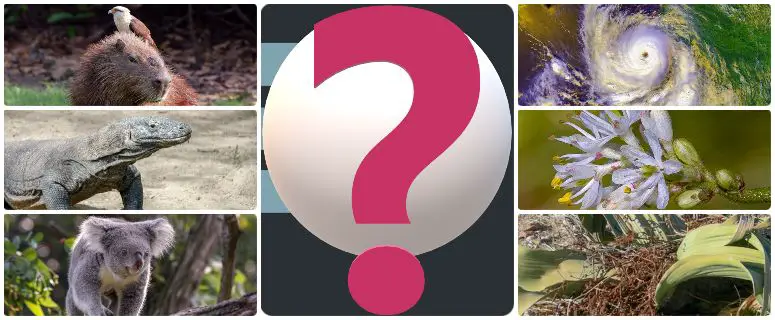Welcome to HowSmart.net, your source for extraordinary trivia. Today, we’re diving deep into the leafy mysteries of Tmesipteris oblanceolata, a tiny fern with a genome larger than life—literally. This fern’s DNA is so extensive that it could stretch over 330 feet, towering above even the Statue of Liberty. Get ready to explore the top ten fascinating facts about this botanical wonder.
Top Ten Facts About the Largest Genome Organism

1. Discovery of the Fern: Who did it?
Meet Tmesipteris oblanceolata, the tiny fern with a giant genetic footprint. Discovered by an international team from the Royal Botanic Gardens Kew, Queen Mary University of London, the Herbarium of New Caledonia, and the Spanish Research Council (CSIC), this groundbreaking find was published in iScience on May 31, 2024.
2. Genome Size: How big?
Hold onto your microscopes! This tiny fern’s genome is a whopping 160.45 gigabase pairs (Gbp), making it about 50 times larger than the human genome. Talk about overachieving!
3. Comparison with the Previous Record Holder: 7% difference
Move over, Paris Japonica! The flowering plant once held the title with a genome of 148.89 Gbp, but Tmesipteris oblanceolata’s genome is roughly 7% larger, claiming the new crown.
4. Physical Extent of DNA: Longer than the Statue of Liberty
If you unraveled the DNA from a single cell of this fern, it would stretch over 330 feet—taller than the Statue of Liberty. In comparison, human DNA stretches to a modest six feet. Size does matter in the plant world!
5. Habitat: Welcome to New Caledonia
This rare fork fern calls New Caledonia home. Nestled in the Southwest Pacific, this French territory provides the perfect tree trunks and branches for this genomic giant to grow.
6. Impact on Growth and Survival: Will it survive?
With great genome size comes great responsibility. Plants like Tmesipteris oblanceolata are slow-growing and need more nutrients, which could make adapting to environmental changes challenging, increasing their extinction risk.
7. Research Significance: Why is it important?
The discovery of this fern’s colossal genome raises intriguing questions about the evolutionary significance of such large genomes. Scientists are eager to piece together this genetic puzzle, expanding our understanding of plant evolution and diversity.
8. Chromosome Hoarding: Nature’s archive
Ferns are notorious chromosome hoarders, accumulating extra copies of chromosomes and repeating DNA sequences. Tmesipteris oblanceolata is no exception, proudly flaunting its genetic hoarding habits.
9. Global Genome Studies: Go Eukaryotes!
This fern’s genome was measured as part of a global initiative to map the genomes of over 20,000 eukaryotic organisms. It’s a testament to the incredible diversity of life on Earth.
10. Recognition: A Bona Fide World Record
Drumroll, please! Guinness World Records has officially recognized Tmesipteris oblanceolata as the organism with the largest genome. This accolade cements its place in scientific history and trivia fame.
FAQ Section
What is Tmesipteris oblanceolata?
Tmesipteris oblanceolata is a tiny fern found in New Caledonia, known for having the largest genome of any living organism, measuring 160.45 gigabase pairs.
How large is Tmesipteris oblanceolata’s genome?
Its genome is 160.45 gigabase pairs, about 50 times larger than the human genome.
Where was Tmesipteris oblanceolata discovered?
An international team of scientists from various prestigious institutions identified it and published it in iScience on May 31, 2024.
Why is Tmesipteris oblanceolata’s large genome significant?
The large genome size raises essential questions about the evolutionary significance and limits of genome sizes, contributing to our understanding of genetic diversity and plant evolution.
Has Tmesipteris oblanceolata been recognized for its large genome?
Yes, Guinness World Records officially recognizes it as the living organism with the largest genome.
Keep an eye on HowSmart.net for more fascinating trivia and updates. Whether you’re a trivia aficionado or just curious about the weird and wonderful world of plants, Tmesipteris oblanceolata offers a glimpse into the extraordinary. Next time you think your to-do list is long, just remember this fern’s DNA stretches over 330 feet!
Plants Trivia Quiz Time
Now that you know all the facts about the world’s largest genome, how about a quiz?
Found a mistake? Tell us!
Come back tomorrow for another quiz!

Why settle for the ordinary when you can have the extraordinary? With our tailored trivia quizzes, you’re not just getting questions; you’re getting an experience. And the coolest part? It’s all tailor-made for you.
So why wait? Order now, and let’s create some unforgettable content together!
Sources
We cross-checked our trivia facts about the world’s largest genome with the world’s leading news outlets.
- iScience: A 160 Gbp fork fern genome shatters size record for eukaryotes
- CNN: The largest genome ever discovered belongs to a humble fern
- BBC News: Tiny fern smashes world record for biggest DNA
- The New York Times: Scientists Find the Largest Known Genome Inside a Small Plant
Like the Quiz?
Don’t forget to subscribe
to our FREE 😎 newsletter
and never miss a quiz!
You can always unsubscribe later.





